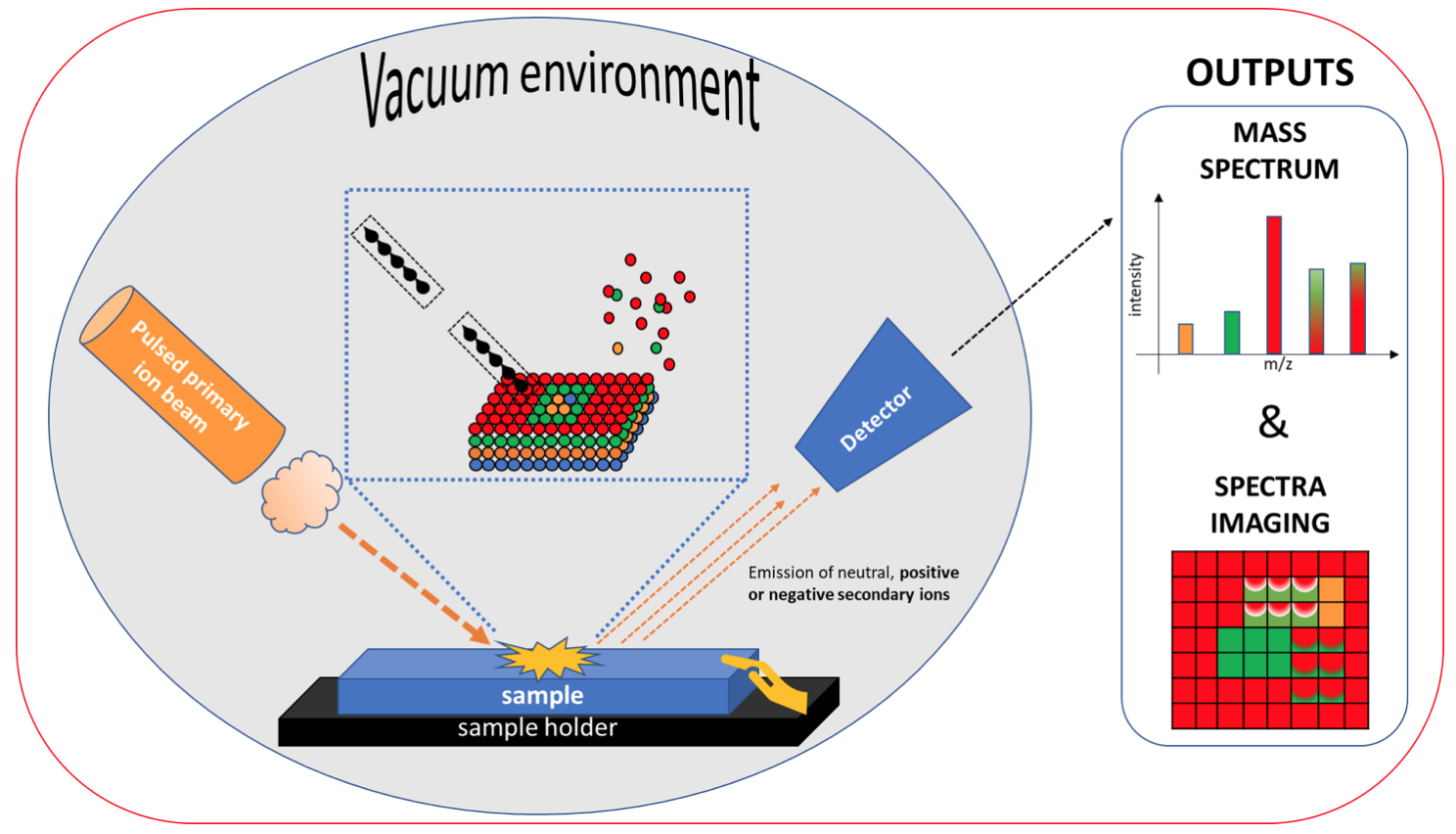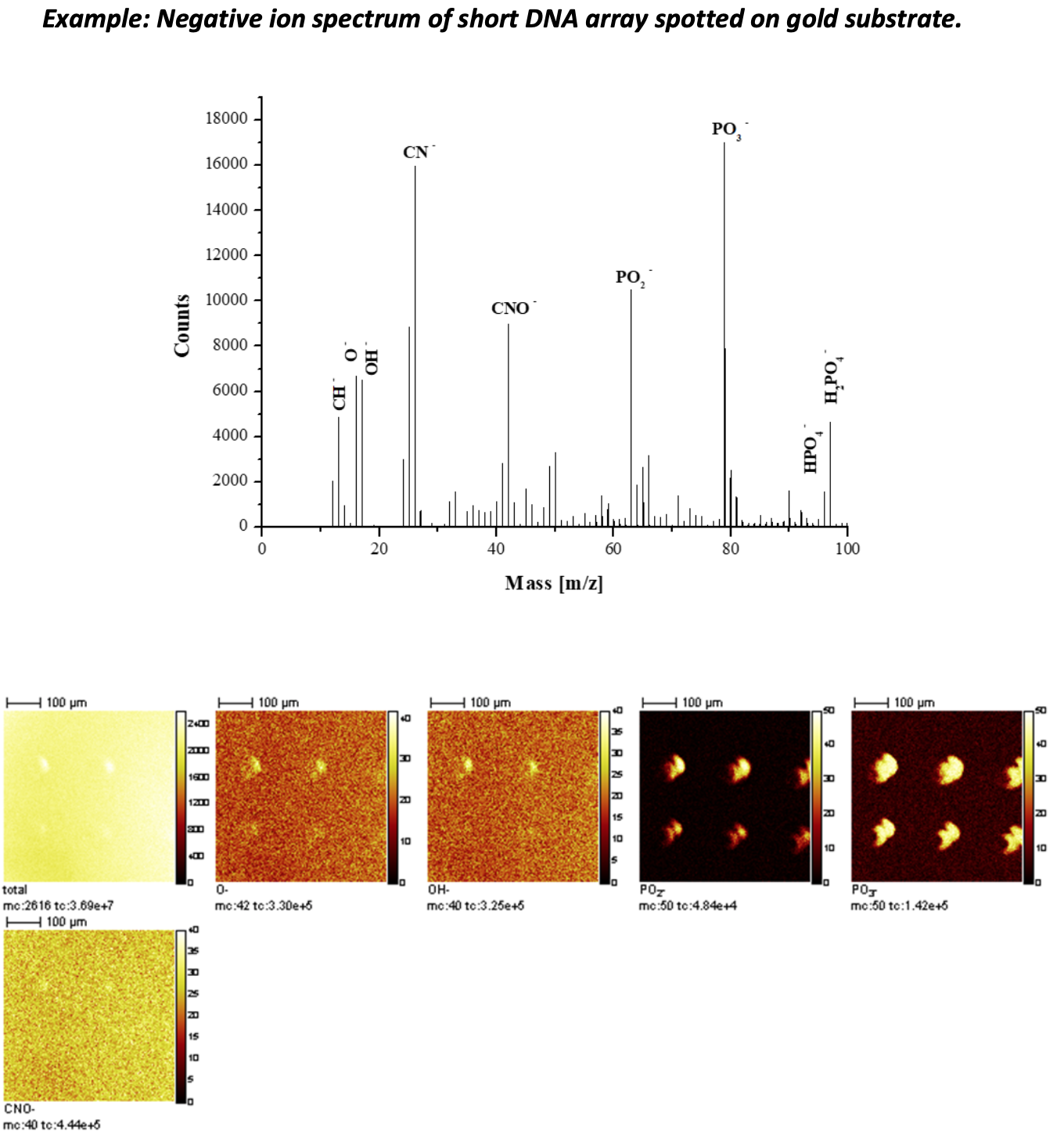How can we study the chemistry of a surface? PART 2
Time Of Flight Secondary Ion Mass Spectrometry ToF-SIMS
ToF-SIMS analysis is based on the sputtering process, where a pulsed train of primary ions is directed on the sample.
Ion bombardment causes erosion of the sample surface and the emission of secondary ions that are detected by a detector.
The ions emitted by the sample are separated according to their mass by the time of flight detector, and the spatial information of where the spectrum was acquired is maintained; so that the extracted ions can be displayed in the form of a spatial map.
With this technique we analyze the first layer of the sample (10-20 Å) with a lateral resolution of about 5 mm (that can decrease to 0.5 µm depending on the experimental conditions).
Samples that easily generate ions, like conductive samples, are preferred, but also insulating materials both in the form of a powder, fiber, or flat samples – as long as they can be introduced to a vacuum environment – can be measured. When measuring insulating materials, primary ion and pulsed low-energy electrons are irradiated simultaneously to prevent charge build up on the sample due to primary ion irradiation.
Using ToF-SIMS it is possible to obtain information regarding elements or molecular species at a very high detection sensitivity.
It provides essential information about surface layers or thin film structures for many industrial and research applications where surface or thin film composition plays a critical role in performance. These may include nanomaterials, photovoltaics, polymer surface modification, catalysis, corrosion, adhesion, semiconductor devices and packaging, magnetic media, display technology, thin film coatings, and medical materials used for numerous applications.
In addition, TOF-SIMS can be used to characterize molecular information from organic materials and tissue sections for medical research.
For further details on this technique:
https://serc.carleton.edu/research_education/geochemsheets/techniques/ToFSIMS.html





